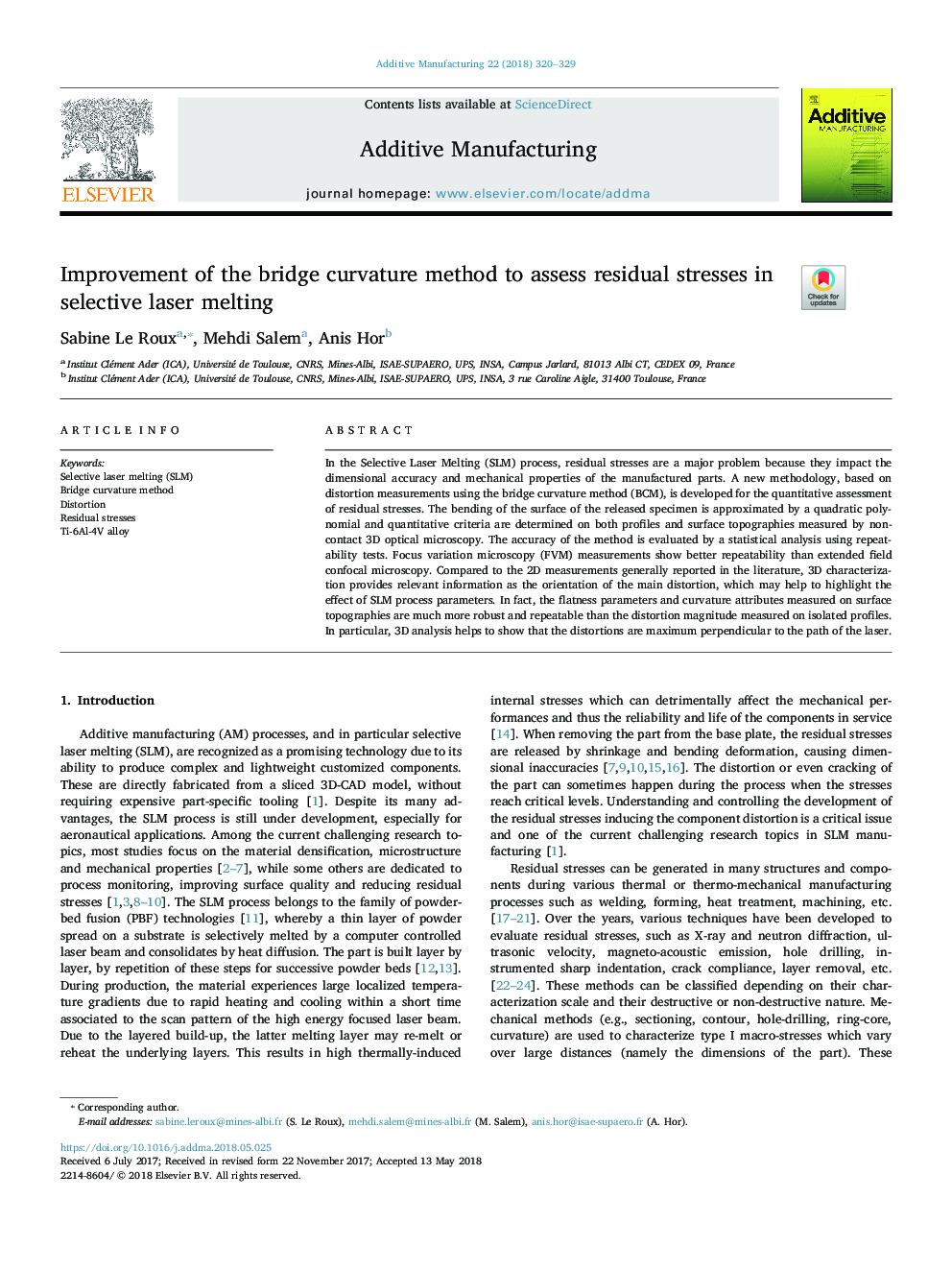| کد مقاله | کد نشریه | سال انتشار | مقاله انگلیسی | نسخه تمام متن |
|---|---|---|---|---|
| 7205754 | 1468627 | 2018 | 10 صفحه PDF | دانلود رایگان |
عنوان انگلیسی مقاله ISI
Improvement of the bridge curvature method to assess residual stresses in selective laser melting
ترجمه فارسی عنوان
بهبود روش انحنای پل برای تعیین تنشهای باقی مانده در ذوب لیزری انتخابی
دانلود مقاله + سفارش ترجمه
دانلود مقاله ISI انگلیسی
رایگان برای ایرانیان
کلمات کلیدی
موضوعات مرتبط
مهندسی و علوم پایه
سایر رشته های مهندسی
مهندسی صنعتی و تولید
چکیده انگلیسی
In the Selective Laser Melting (SLM) process, residual stresses are a major problem because they impact the dimensional accuracy and mechanical properties of the manufactured parts. A new methodology, based on distortion measurements using the bridge curvature method (BCM), is developed for the quantitative assessment of residual stresses. The bending of the surface of the released specimen is approximated by a quadratic polynomial and quantitative criteria are determined on both profiles and surface topographies measured by non-contact 3D optical microscopy. The accuracy of the method is evaluated by a statistical analysis using repeatability tests. Focus variation microscopy (FVM) measurements show better repeatability than extended field confocal microscopy. Compared to the 2D measurements generally reported in the literature, 3D characterization provides relevant information as the orientation of the main distortion, which may help to highlight the effect of SLM process parameters. In fact, the flatness parameters and curvature attributes measured on surface topographies are much more robust and repeatable than the distortion magnitude measured on isolated profiles. In particular, 3D analysis helps to show that the distortions are maximum perpendicular to the path of the laser.
ناشر
Database: Elsevier - ScienceDirect (ساینس دایرکت)
Journal: Additive Manufacturing - Volume 22, August 2018, Pages 320-329
Journal: Additive Manufacturing - Volume 22, August 2018, Pages 320-329
نویسندگان
Sabine Le Roux, Mehdi Salem, Anis Hor,
